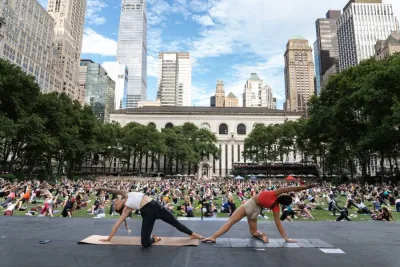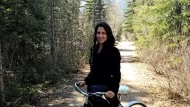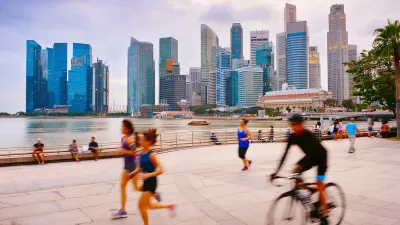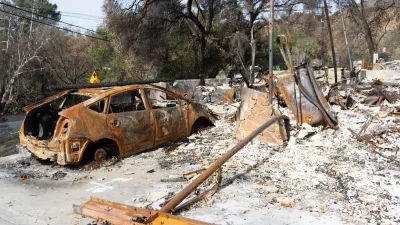Humans relish in over-complicating things, but the sweetest and healthiest things in life are the simplest.

I was happy to learn that Wellness is the theme of this year’s Biophilic Leadership Summit at Serenbe, taking place March 30–April 1. The annual event brings together academics and others to share some of the latest research on biophilic design. I attended the Summit last spring, which had a Placemaking theme, and moderated a panel. This year, after navigating Hurricane Helene and unexpectedly moving to a new state, I didn’t have the capacity to seek involvement, even though I now live just 30 minutes away.
Biophilia is a Greek word that translates to ‘the love of life’ (bio = life; philia = love). It was popularized by ecologist E.O. Wilson to describe the importance of humans connecting with nature. Like many Western disciplines, it positions humans as separate from nature, in contrast to indigenous understandings of how we are intrinsically part of it, just like other animals. Nevertheless, the field of biophilia provides a useful framework for Western thinkers to appeal to city planners, architects, and others to integrate natural elements into man-made places.
I noticed early last year that a key element missing from the field in a substantial way was the crucial element of human movement, the focus of much of my career. Jennifer Walsh’s wonderful, heartfelt (and scientific) work about walking is probably the largest contribution in this space. It’s wonderful and only expanding, so follow her. She’s also a lovely human.
The below is an excerpt of what I pitched the Summit last year for a presentation; and although the board didn’t accept it (perhaps because I lack a PhD and was unknown to them), it’s worth sharing to a broader audience. It’s something I’ve spoken about for a while and was the focus of a presentation I delivered in April 2024 at an International Downtown Association conference alongside the board chair.
—
A key ingredient of successful biophilic placemaking is the essential element of human movement. Human movement – both to and within a place – extends the placemaking experience and welcomes a wider diversity of people across cultures and age groups.
Most will agree that still, quiet reflection in biophilic places brings humans many benefits. Less discussed is the interplay and importance of movement. Yet, humans are designed to move, and it's essential for our basic survival as well as our physical, mental, and emotional health.
Just like squirrels, birds, and pets who forage for food and water, soak up the sun, and jump and fly about, humans are also built to move outside to produce food, sunbathe, commune, and stretch and strengthen our bodies. Our shift to doing much of this indoors is a mostly maladaptive phenomenon. Moving outside in nature is part of who we are as a species.
Human movement is also beautiful and artistic. From indigenous rain dances to Greek choreias, dance has been a primary form of cultural expression, central to spiritual life and community. Some dances are a form of oral tradition and storytelling. This is delightfully place-based: every community has its own spin – sometimes literally, like on cardboard boxes in the Bronx where breakdancing began in the ‘70s.
Today, in public parks and other biophilic places around the world, people love to move. Indeed, the most popular natural places invite this, which ensures the positive feedback loop of a place’s active use, safety, and social elements. On converted rail lines and other rural and urban trails, people walk, jog, bicycle, skate, and otherwise move their bodies in a shared place. Whether walking on NYC’s High Line, bicycling along Greenville’s Swamp Rabbit Trail, salsa dancing in Los Angeles, playing pickup basketball in urban parks, mastering tai chi outside a community center, or participating in yoga in a public square, human movement is often the lifeblood of a place.
We like our streets designed this way, too. People prefer streets that feel like communal places, where we not only get from point A to B, but also do so safely and with a social interaction. We know that relegating streets to only car transportation and speed is a failed recipe for safety, social life, and economics. We’re learning from the past and redesigning our failed streets as linear parks. We’re re-incorporating design strategies like traffic calming, curb extensions, wide sidewalks, protected bike lanes, tree cover, pollinator gardens, food gardens, benches, tables, creative crosswalks, public murals, sculptures, free library stands, and more to redesign our streets as places.
All of this is essential for climate mitigation and planetary health. Converting some car trips into active transit trips draws down carbon, as does creating beautiful biophilic places people can reach car-free.
Drawing from her sustainable placemaking and transportation career on guiding the development of walkable and bicycle communities, successful urban parks, and other biophilic amenities, April will provide details about specific projects and current initiatives. She’ll also share briefly about her personal journey of choosing to live car-free most of her life in multiple cities, including as a single-parent bicycle commuter. After Q&A, April will facilitate a mini workshop for audience members to reflect and discuss how they might weave more movement into their work and communities.
—
Outdoor human movement is the closest thing to a panacea for human health. (By the way, panacea comes from the Greek word panakēs, which means all-healing [pan = all; akos = remedy].) While arguably nothing is a cure-all for everything, outdoor human movement comes mighty close. Movement, sunshine, Vitamin D, happiness, fresh air, and being screen-free really packs a punch.
The concept isn’t new, which makes it even more important. After all, the most central things in life are obvious yet often undervalued. Humans relish in over-complicating things, but the sweetest and healthiest things in life are the simplest.
I’m posting this at the Spring Equinox, exactly one year after I rebranded my 21-year consultancy to Holistic Cities. Now that I’m settled post-hurricane, I look forward to continuing my work in this area.
Please join me in moving more outdoors this season, whether through walking, hiking, bicycling, skateboarding, gardening, dancing, martial arts, paddle boarding, or anything that gets you moving. Solo or in community, let’s step into the fresh air. It’s what we’re made for.
Happy Spring!

Maui's Vacation Rental Debate Turns Ugly
Verbal attacks, misinformation campaigns and fistfights plague a high-stakes debate to convert thousands of vacation rentals into long-term housing.

Planetizen Federal Action Tracker
A weekly monitor of how Trump’s orders and actions are impacting planners and planning in America.

In Urban Planning, AI Prompting Could be the New Design Thinking
Creativity has long been key to great urban design. What if we see AI as our new creative partner?

King County Supportive Housing Program Offers Hope for Unhoused Residents
The county is taking a ‘Housing First’ approach that prioritizes getting people into housing, then offering wraparound supportive services.

Researchers Use AI to Get Clearer Picture of US Housing
Analysts are using artificial intelligence to supercharge their research by allowing them to comb through data faster. Though these AI tools can be error prone, they save time and housing researchers are optimistic about the future.

Making Shared Micromobility More Inclusive
Cities and shared mobility system operators can do more to include people with disabilities in planning and operations, per a new report.
Urban Design for Planners 1: Software Tools
This six-course series explores essential urban design concepts using open source software and equips planners with the tools they need to participate fully in the urban design process.
Planning for Universal Design
Learn the tools for implementing Universal Design in planning regulations.
planning NEXT
Appalachian Highlands Housing Partners
Mpact (founded as Rail~Volution)
City of Camden Redevelopment Agency
City of Astoria
City of Portland
City of Laramie






























